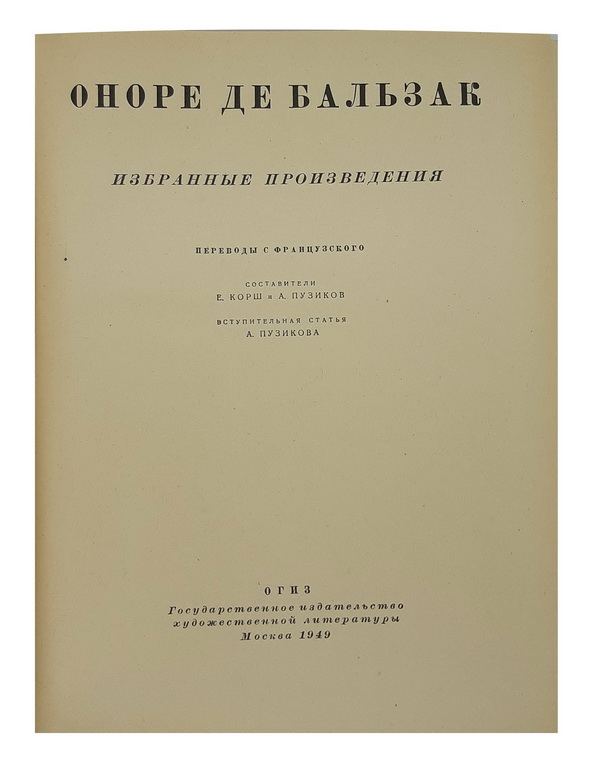Onore de Bal'zak, Izbrannye proizvedeniya. Podarochnaya v futlyare, 1949
Selected works. Gift in a case
Honoré de Balzac, Selected Works. Gift edition in a case, Moscow, 1949. In this single-volume “Selected Works” of Balzac, the most significant novels and stories that make up “La Comédie Humaine” are presented. The compilers aimed to achieve internal unity among the works included in the single volume. The first two sections of the single volume correspond to “Studies of Manners.” The first section provides an insight into “Scenes of Private Life” and “Scenes of Parisian Life.” It opens with the novel “Father Goriot,” which introduces the reader to the world of Balzac’s characters and events most effectively. Following this novel, the stories and tales are arranged chronologically, all of them in some way connected to “Father Goriot.” Balzac’s stories are presented in chronological order, and the chronology of writing coincides with the chronology of events, giving the entire section a narrative completeness. The second section, dedicated to life in the French provinces and villages, features two of Balzac’s finest works on this theme: “Eugénie Grandet” and “The Peasants.” It also includes the tale “The Illustrious Gaudissart.” The third section, based on the chronological principle of compilation, could have been the first, as “The Wild Ass’s Skin” and “The Unknown Masterpiece” are early works by Balzac. However, Balzac himself assigned these works to the final cycle of “La Comédie Humaine,” the “Philosophical Studies.” Arranging Balzac’s novels and stories in this way allows the reader to form an understanding of “La Comédie Humaine” as a unified work in which the great French writer “provides us with the most remarkable realistic history of French society, chronicling manners from 1816 to 1848.” Due to the volume limitations of this edition, it was not possible to include the novel “Lost Illusions,” the central work of “La Comédie Humaine,” which, in terms of its size, could have constituted a separate volume.


